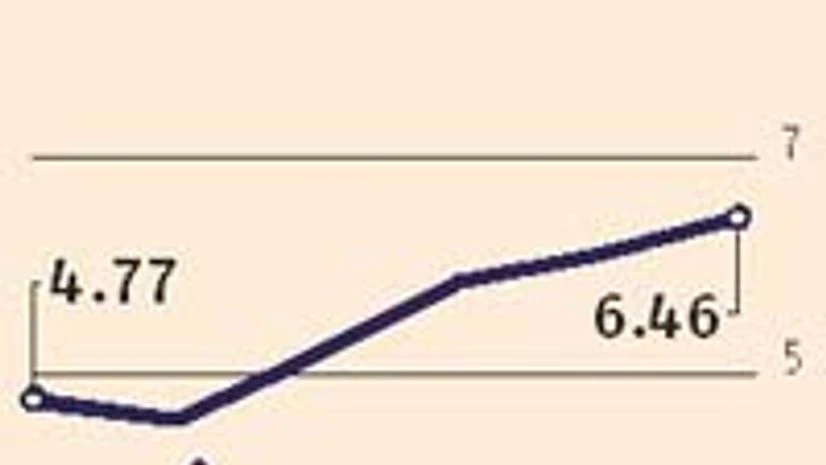After diverging for two months, both Wholesale Price Index (WPI)-based inflation and its Consumer Price Index (CPI) counterpart rose in September. From here, inflation could see downward pressure in both the indices, though some economists expect CPI-based inflation to remain high for a few more months.
In September, wholesale inflation was 6.46 per cent, while retail inflation was 9.84 per cent. The simultaneous rise in WPI- and CPI-based inflation in September can be explained by the lag effect of rising food prices on consumer prices. “Consumer price inflation is correcting the huge gap we had witnessed in food items at retail and wholesale levels in the previous months,” said Soumya Kanti Ghosh, chief economist at State Bank of India.
While WPI inflation rose from 5.16 per cent in June to 5.85 per cent in July and further to 6.10 per cent in August, CPI inflation declined from 9.87 per cent to 9.64 per cent and further to 9.52 per cent in these respective months. In May and June, both the indices had moved in the same direction.
CARE Ratings Chief Economist Madan Sabnavis said the divergent trend in July and August could be explained by the fact that retailers couldn’t increase prices at the same rate as wholesellers and, therefore, had to squeeze their margins.
Why then, did the two indices rise in September? Sabnavis said each food item had a different weight on the CPI, and this could be responsible for the trend.
Food items have about 45 per cent weight on the CPI and 24 per cent on the WPI (while raw food has 14 per cent weight, processed food items have 10 per cent weight). As it is, food inflation is primarily the rate of price rise for raw food items.

Moreover, wastage of fruit and vegetables declined in winters, as the shelf lives of these items, even in the absence of proper refrigeration, increased due to favourable weather conditions, the analysis said.Ghosh said CPI inflation might touch double digits, as the gap between CPI food inflation and its WPI counterpart corrected further.
YES Bank chief economist Shubhada Rao said she expected the two indices to diverge again.
While WPI inflation was expected to rise to seven-7.5% by the end of this financial year, its CPI counterpart was likely to fall to eight-8.5 per cent, she added.

)
